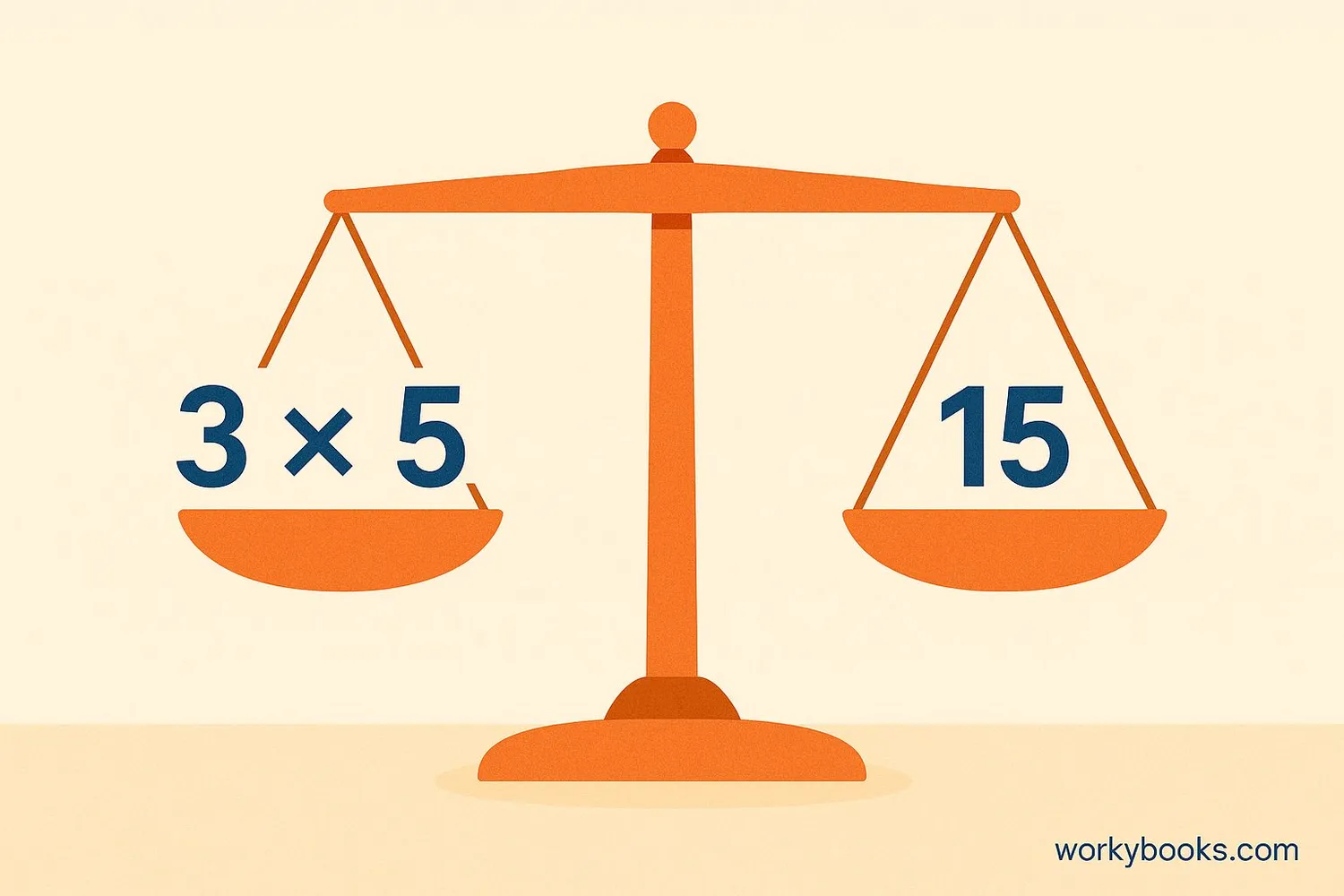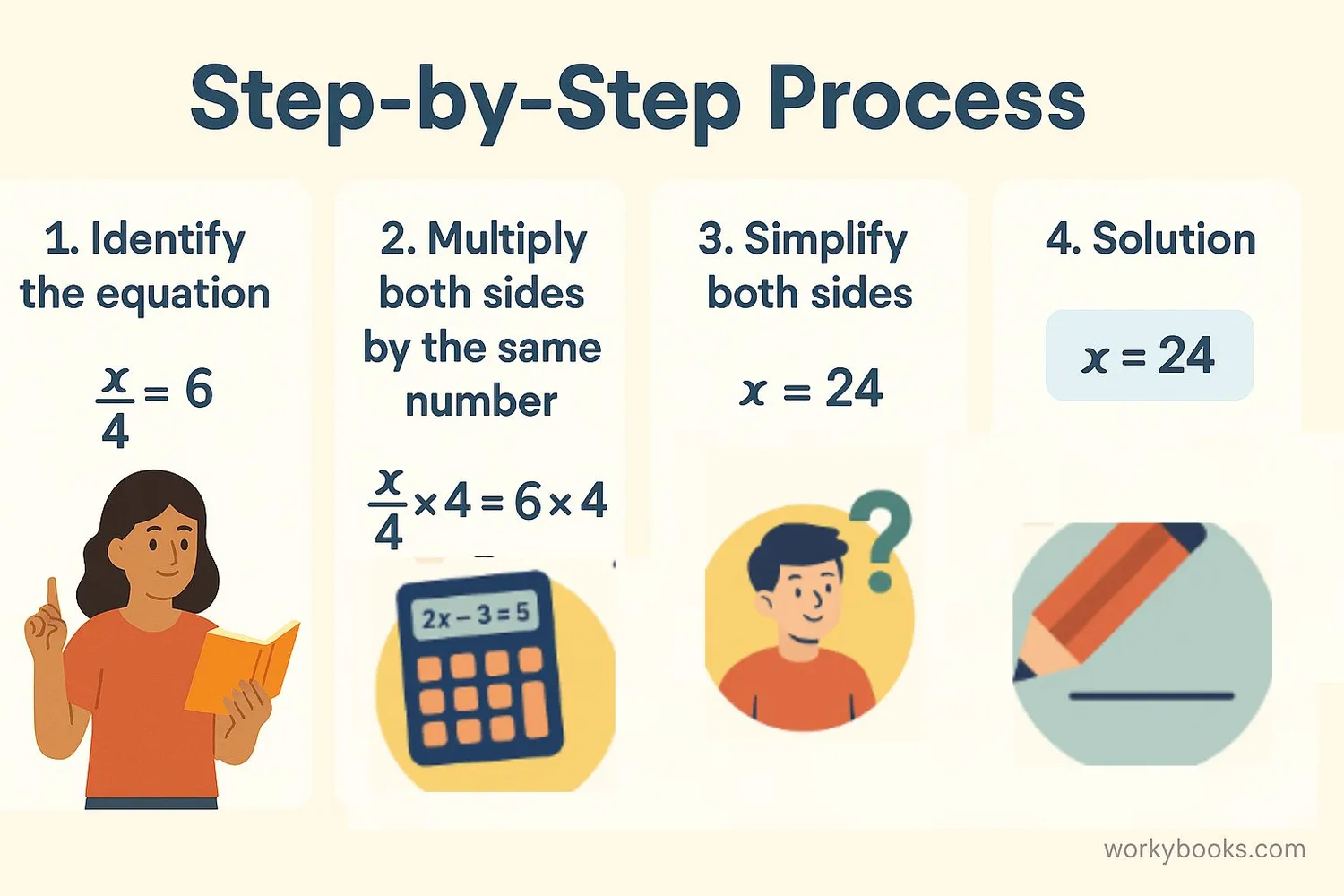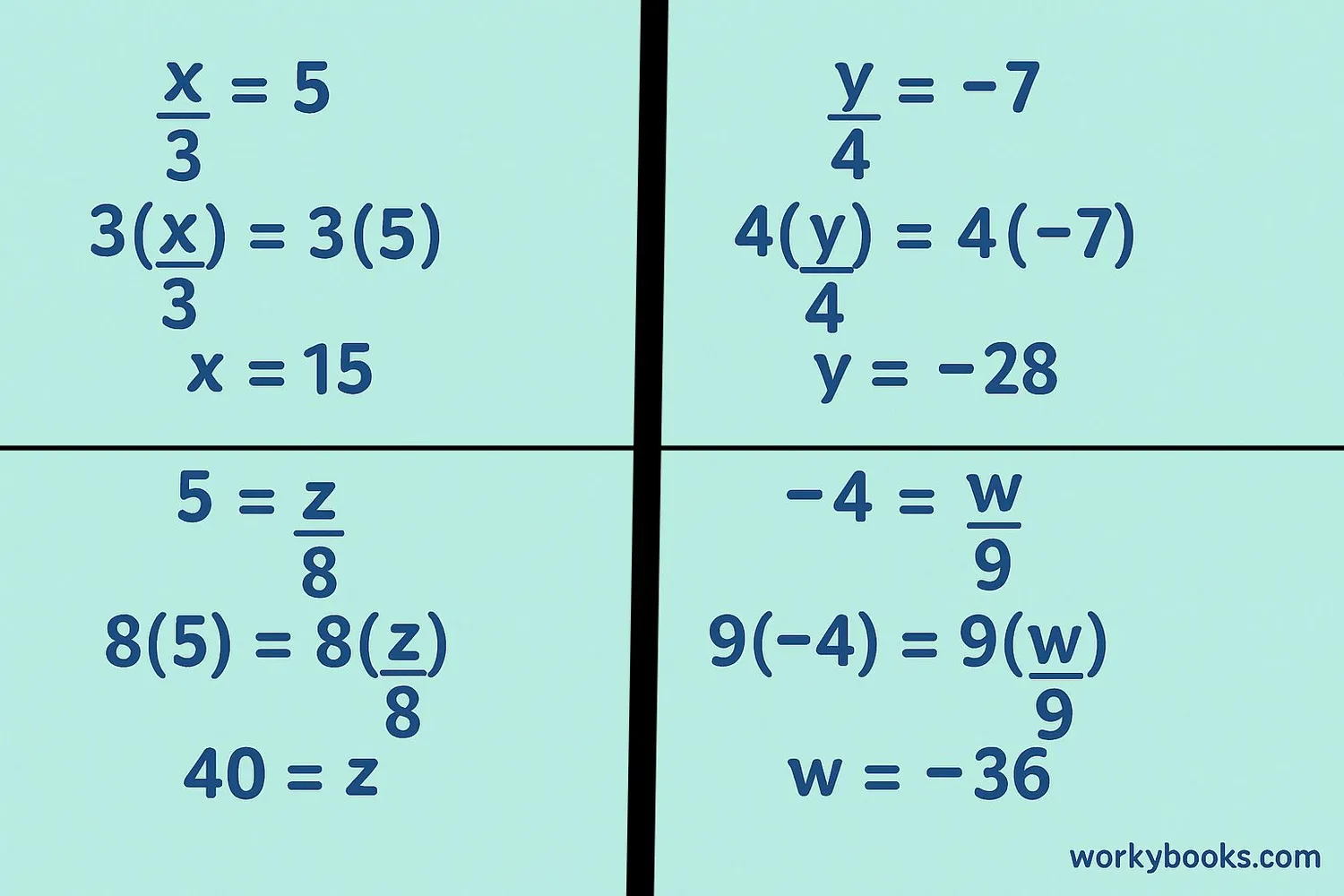Multiplication Property of Equality - Definition, Examples, Quiz, FAQ, Trivia
Learn how to solve equations using the multiplication property of equality with examples and practice activities
What is the Multiplication Property of Equality?

The Multiplication Property of Equality is a mathematical rule that helps us solve equations. It states that if you multiply both sides of an equation by the same number, the two sides remain equal.
Think of it like a balanced scale. If you have a scale that is perfectly balanced, and you put the same weight on both sides, the scale will stay balanced. The multiplication property works the same way with numbers!
This property is especially useful when we need to solve for an unknown variable (like x) in an equation. By multiplying both sides by the same number, we can "undo" division and find the value of the variable.
Multiplication Property of Equality
Where a, b, and c are real numbers, and c ≠ 0
Key Concept
You must multiply both sides of the equation by the same number to keep the equation balanced.
How the Multiplication Property Works

Using the multiplication property of equality follows a simple process:
1. Identify the equation you need to solve
2. Determine what number you need to multiply both sides by
3. Multiply both sides of the equation by that number
4. Simplify both sides if needed
5. Check your solution by substituting it back into the original equation
This property is especially helpful when you have a variable divided by a number. For example, if you have x/3 = 5, you can multiply both sides by 3 to find that x = 15.
Example Walkthrough
Start with the equation:
Multiply both sides by 4:
Simplify both sides:
Check the solution by substituting back:
Remember
You can only multiply by numbers that are not zero. Multiplying by zero would make both sides zero, which doesn't help solve the equation.
Practice Examples

Let's practice using the multiplication property with some examples:
Example 1
Solve: x/5 = 7
Multiply both sides by 5:
Simplify:
Example 2
Solve: y/2 = 9
Multiply both sides by 2:
Simplify:
Example 3
Solve: 3 = a/4
Multiply both sides by 4:
Simplify:
Example 4
Solve: 2.5 = b/3
Multiply both sides by 3:
Simplify:
Practice Tip
Always check your solution by substituting it back into the original equation to make sure both sides are equal.
Practice Quiz
Test your understanding with this 5-question quiz. Choose the correct answer for each question.
Frequently Asked Questions
Here are answers to common questions about the multiplication property of equality:
Math Trivia
Discover interesting facts about mathematics and equations:
Ancient Equations
The earliest known equations date back to ancient Babylon around 2000 BCE. They used words instead of symbols to describe mathematical problems.
Equal Sign Origin
The equal sign (=) was invented by Welsh mathematician Robert Recorde in 1557. He thought nothing could be more equal than two parallel lines of the same length.
Properties of Equality
There are several properties of equality: reflexive (a = a), symmetric (if a = b, then b = a), transitive (if a = b and b = c, then a = c), and the multiplicative property we're learning about.
Longest Equation
The longest mathematical equation ever written contains about 200 terabytes of text! It would take approximately 4.5 billion pages to write it out.





